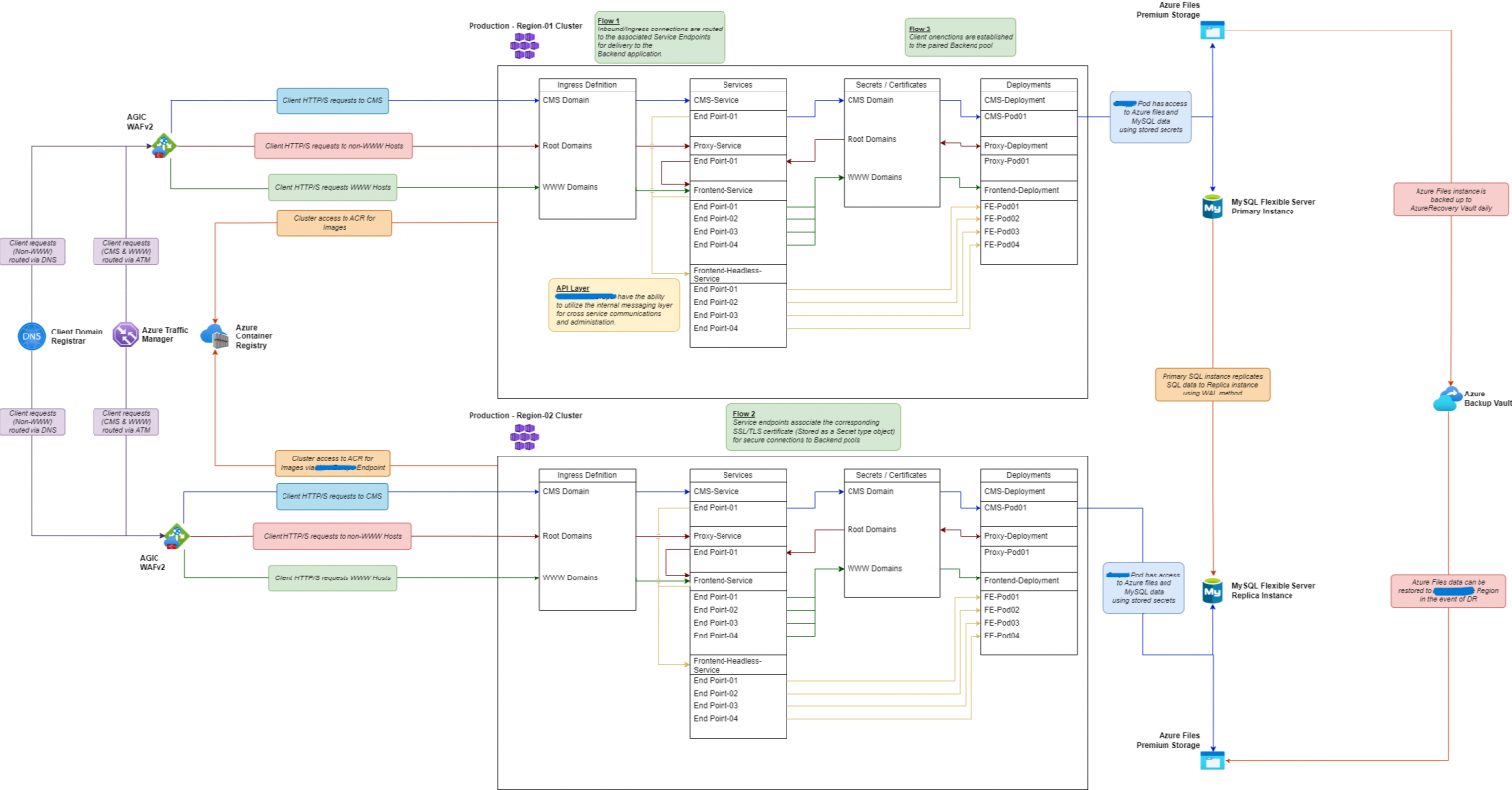Microservices Solution for a Global Web Application – A Scalable and Resilient Approach
In recent years, the need for scalable and resilient web applications has become paramount, especially for organizations with a global user base.
As demands for performance, reliability, and flexibility increase – many legacy systems struggle to keep up.
I recently had the opportunity to design and deploy a microservices solution to modernize a previously monolithic application architecture hosted on a single virtual machine.
This new architecture leverages containerized services and cloud-native tools to address the limitations of the older setup.

Solution Overview
This new solution is structured around two main applications:
Frontend Application – The user-facing component of the application.
Backend CMS Application – Handles content management and serves data to the frontend.
Both of the above applications are containerized and deployed within an AKS cluster, allowing them to be managed, scaled, and updated independently but allowing them to communicate internally within the cluster, reducing latency and improving security by restricting external exposure.
Benefits Achieved
Scalability: Unlike the legacy virtual machine setup, this architecture leverages AKS to automatically scale resources based on demand. This dynamic scaling ensures that the application can handle high traffic volumes during peak times without compromising performance.
Resilience and High Availability: By deploying services across multiple regions, the application is prepared for failover scenarios. The data replication strategy also ensures minimal downtime in case of regional failures, as traffic can be redirected seamlessly to the secondary region.
Enhanced Security: Using AGIC with WAF, SSL/TLS certificates, and private service endpoints ensures a robust security model, protecting both external and internal communication channels.
Simplified Management: Microservices allow individual components of the application to be updated or scaled without impacting the entire system. This modularity also reduces the time required for maintenance and troubleshooting.
Modernizing the Architecture: Key Goals
The primary objective of this project was to enhance scalability, availability, and maintainability.
The original virtual machine setup lacked the flexibility to scale resources based on traffic spikes or growing demand. It also posed challenges in terms of updates and recovery in case of failures.
By transitioning to a microservices-based architecture on Azure Kubernetes Service (AKS), we ensured that the new system could handle increased traffic and offer seamless scalability with automated scaling capabilities.
Core Components of the Architecture
Ingress Management
Azure Application Gateway Ingress Controller (AGIC) is used for managing client requests and providing a Web Application Firewall (WAF) layer. This configuration ensures that all client traffic, whether it’s directed to the frontend or the CMS, is inspected and routed appropriately, with security policies enforced at the gateway level.
Load Balancing and Traffic Routing
Azure Traffic Manager is configured to route traffic based on geographical proximity and network latency. This setup optimizes user experience by directing users to the closest available data center, reducing latency and improving load times.
Azure Container Registry (ACR) Integration
ACR serves as the central repository for all container images used in the application. The AKS clusters in multiple regions access ACR for image retrieval, ensuring consistent deployment configurations across environments.
Replication and Data Redundancy
To ensure high availability, the solution uses MySQL Flexible Server with replication across primary and replica instances. The primary server handles active workloads, while the replica instance in a secondary region is set up for failover and load distribution.
Azure Files is used to store application data, ensuring redundancy and allowing data to be backed up daily to Azure Backup Vault.
Cluster Security and Certificates
Internal communication between services and API layers in the cluster is secured with SSL/TLS certificates. This encryption layer safeguards sensitive data transfers within the cluster.
Conclusion
This microservices solution illustrates how transitioning from a monolithic setup to a cloud-native architecture can drastically improve scalability, resilience, and manageability.By leveraging Azure’s suite of tools, this deployment not only supports global traffic with efficient load distribution but also ensures high data availability and security.
In an era where digital transformation is imperative, adopting a microservices approach like this enables businesses to remain agile and prepared for future growth.
